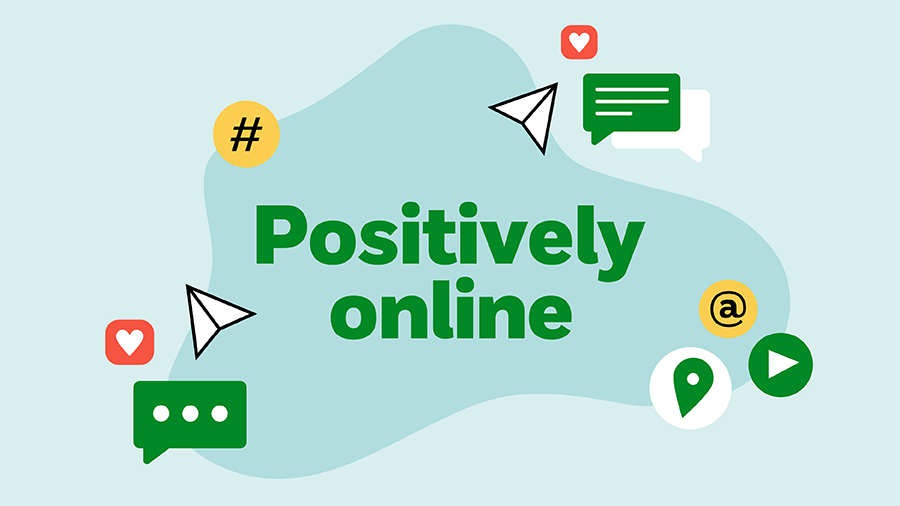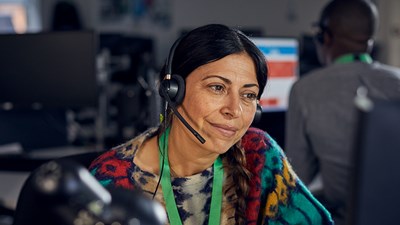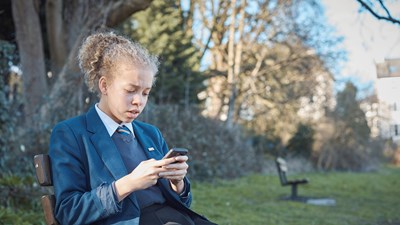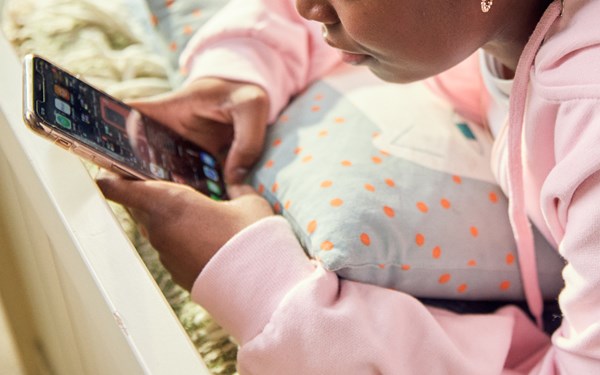There are lots of positives to being online for children, from staying in touch with friends to learning about the world.
There are some challenges, too, and the online world can be tricky for children to navigate. For some it can become overwhelming trying to keep up with friends, and the pressure can mount.
Noticing how your child is affected by being online is the first step in helping them manage their wellbeing.
You can:
- manage the content that your children see
- ensure the interactions they have are suitable
- manage how long they’re online, in balance with other activities.
There are several things you can do to help support a child, including using specific apps and checking app settings.
"It would be very nice if they wouldn’t say ‘Be careful who you’re talking to online, they might not be who you think they are’, and instead ‘If anything at all makes you even slightly uncomfortable, then you can talk to someone.'"
Jess, 17
Tips for managing wellbeing online
Have regular conversations with your child
Give children the chance to talk about what they're experiencing online, what apps and sites they use and who they're talking to.
Talking regularly, like you would about their day at school, will help your child feel relaxed and mean that when they do have any worries, they’re more likely to come and speak to you.
Remind them that it isn’t just you that they can talk to – another trusted adult or a Childline counsellor might be easier sometimes.
When children communicate online, misunderstandings can lead to disagreements or arguments. Encourage your child to look at the Childline website, which has lots of useful advice articles:
Childline’s Calm zone is also packed with tools and activities to help children de-stress and discover new techniques that can support them when they’re feeling down. Young people can also talk to each other about their worries on the Childline message boards.
Consider that what children see online is often through a filter. It isn’t just images and videos that can be filtered or edited, but bodies and lives too.
Take breaks
Our devices are designed to keep us coming back. Features like infinite scrolling, app notifications, auto play and rewards for playing games every day are all persuasive designs to increase our use.
Mobile and wearable tech such as phones and smart watches can make us feel like we’re always online and it can help everyone to take a break sometimes, to help switch off from online pressures.
You can use the settings on individual apps, or in the device settings, to silence notifications for a period of time.
You can also use the 'do not disturb' mode available on most devices to mute calls and notifications, to help avoid distractions.
Use wellbeing settings and apps
These sites and apps are specifically designed to help children with their online wellbeing:
BBC Own it which gives advice as they chat to their friends online.
Headspace for Kids is an app to teach children the basics of mindfulness in a fun way. It’s aimed at 3-12 year olds, with different content for the different age groups. Free for Headspace subscribers, limited access for non-subscribers.
JoyPoP is an app designed to help users find their inner resilience to deal with the highs and lows in their day to day lives. By rating mood for the day, users are directed to complete different activities to help switch to positive emotions. App costs £6.99.
You can also find out what apps your child uses the most and have a look to see if there are wellbeing guides which explain their settings to help support children's wellbeing.
Positively online: healthy habits for online wellbeing

We believe that going online should be a positive experience for all children.
That's why we've launched our positive online habits – six top tips to help your child feel good about how they use the internet.
They can help you start a conversation with your family about online wellbeing. So you can all feel informed, confident and happy during your time online.





